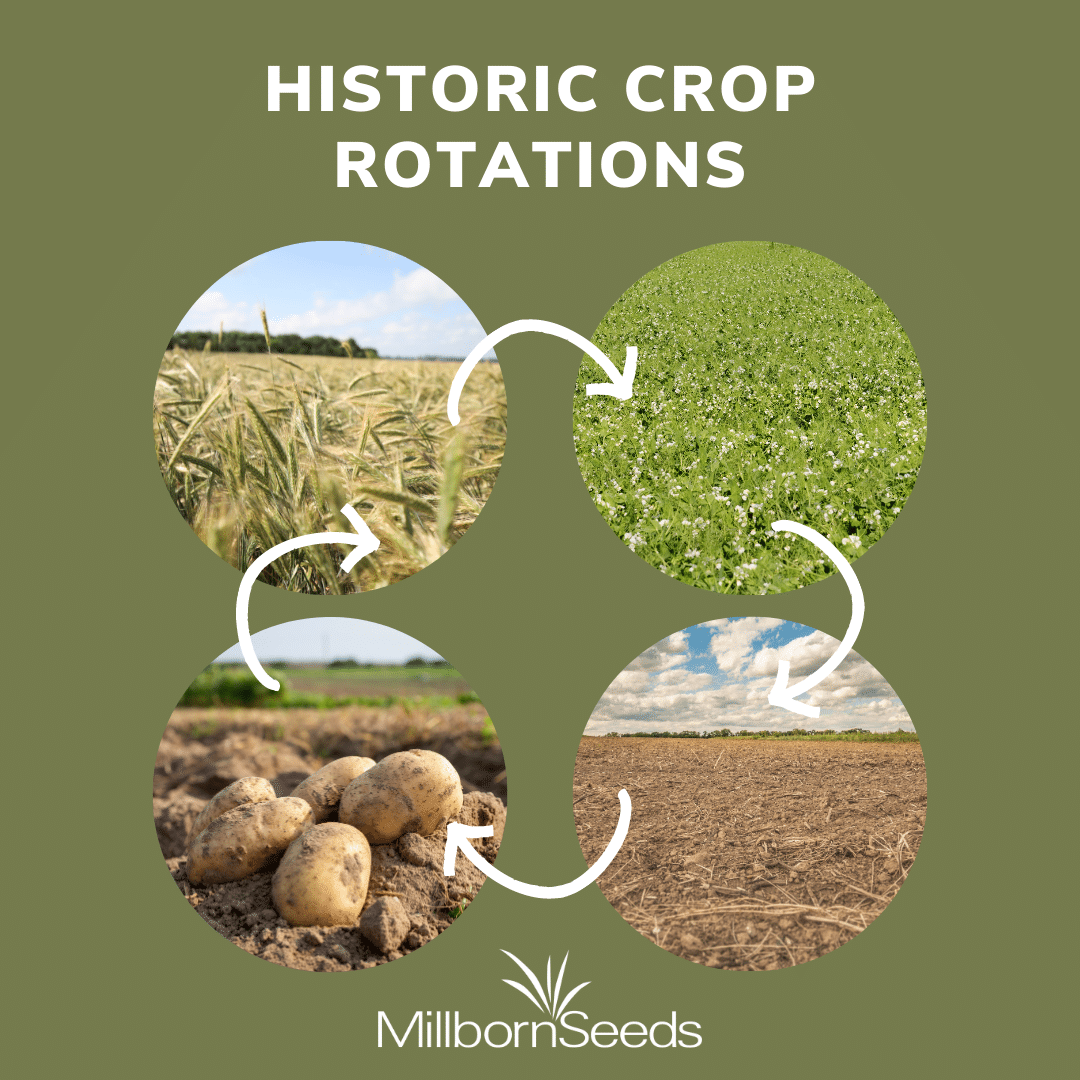SPONSORED- Do you know the history of the acres you’re farming? What was planted there 100 years ago? 50 years ago? The last few years? What crops have been grown in the soil you’re managing today?
Crop rotations date back to ancient times, because those working the land knew that rotating crops helped control pests and diseases and improved the fertility of their soil. In ancient Rome, they used a two-field system, where they planted half of their land with a cereal crop and the other half was left fallow (and then planted with a legume crop the next year). In the Middle Ages in Europe, the three-field system was introduced, where they planted 1/3 of their acres to a cereal crop, 1/3 was left fallow, and the other 1/3 was planted to a legume crop. In the 18th and 19th centuries, the four-field system was introduced, where the fourth field was used for root crops (like potatoes or beets), which allowed for continuous cropping (Crop For Life).

So how did we get away from these multi-crop systems?https://www.millbornseeds.com/In the 1950s Iowa was the top oat producing state in the U.S., harvesting more than 6 million acres of oats to feed to livestock on diverse family farms. Now, as livestock operations have concentrated and farms have consolidated, the need for oats as feed decreased and the law of supply and demand saw oat production decrease to only 73,000 acres harvested in Iowa in 2020 – a 98.8% decrease.
But even if livestock feed needs are not creating the same demand for crop diversity, the demand still exists. Think about the demands from:
- soil for diverse nutrient profiles and increased organic matter.
- cash crops for nitrogen fixation.
- the environment for reduced erosion.
- cash flow for decreased chemical and fertilizer application.
The demand is there, it’s just showing up differently.
In late June of 2023, during the peak of a dry stretch, the US saw the worst crop conditions for that time of year since 1988. It makes you think: what if we focused on creating crop systems that allow our soil to hold water better? What if we had resilient, drought-friendly feed options? What if we shifted our focus to creating crop systems that can handle extreme weather changes? Reviving the soil with a multi-crop approach has more benefits than soil health – it’s an insurance policy against the unknowns of Mother Nature.
And even better yet, research has shown that diverse farms increase their profits by spending less on fertilizer, fuel, and herbicides in the year after they plant small grains. Profitable systems are worth repeating.
It’s hard to fathom, but perhaps our culture of monoculture needs a renewed way of thinking. Perhaps what we consider “normal” needs to be revived. We need to rethink our systems, while still maintaining simplicity and profitability.

No single system will work for every farm, but a simple solution to renew your land exists. Maybe it’s adding a legume for nitrogen fixation. Or adding a brassica to break up soil compaction. Or planting a cereal crop to reduce erosion. Start small – you don’t have to change your whole farm overnight.
Renew your thinking. Revive your land. Repeat your success. As land use linchpins, we’re here to help ensure the continued productivity of your land for generations to come.
Written by Justin Fruechte- ag product expert with Millborn Seeds


